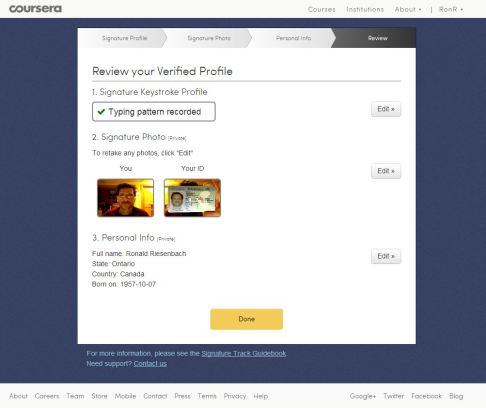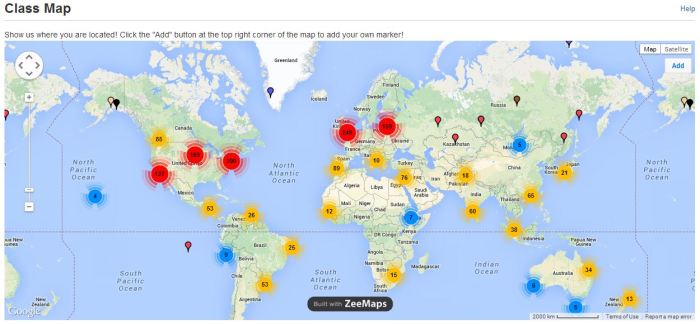On the Internet, nobody knows you are a dog
 There are probably many folks out there that are familiar with the classic cartoon on the left. It was drawn in 1993, at a time when there was a universal expectation that your activity on the Internet was anonymous and untraceable. Even a dog could mascaraed as a person.
There are probably many folks out there that are familiar with the classic cartoon on the left. It was drawn in 1993, at a time when there was a universal expectation that your activity on the Internet was anonymous and untraceable. Even a dog could mascaraed as a person.
Today, the opposite is true. Everything you do on the Internet and with your cell phone is tracked, correlated, analysed, identified and recorded. You and your activity become commodities that are bought and sold between firms or used by governments to ‘protect you’. You cannot so much as walk around the city with your smart-phone’s WiFi or Cell service turned on without your activity being tracked and used for commercial (at best) or nefarious (at worst) uses.
In this brave new world, commerce has changed. All that wonderful stuff out there in the cloud that we access all day long cost money to make and it has to be paid for. We consumers have tacitly agreed to pay for it, but with a different kind of currency – our identities. One of my favourite Internet security gurus, Bruce Schneirer , says it succinctly:
Nothing is free, so if you won’t pay cash, you’ll have to pay with personal information.
Okay, so we can no longer trust that our Internet activity is anonymous. But I have also found that it is true that no one trusts us even when we choose to declare our identity.
I had a personal taste of this one night 2-weeks ago. Working on my home computer in my basement, I hit the enter key to submit my answers to a final exam in Introductory Human Physiology, an on-line Coursea course. Rather than the results being submitted, something curious happened. I was taken to a web page that asked me to type a particular sentence into a box on the screen. As I typed, a program ran in the background analysing my typing style.

When that was done, a message appeared that said that my typing passed the test. Then, I was then taken to a different page that asked me to sit-up straight and look right into my webcam. After I clicked an OK button, a picture was taken of me. A few seconds of analysis followed. Again, a message appeared saying that my image passed. Finally, I was taken to a page that said that my exam results have been linked to my identity and submitted for grading.
In truth, this wasn’t a total surprise to me. You see, when I enrolled in this Coursera course, I chose their ‘Signature Track’ – an optional service where my participation in the course is linked to my identity. When I opted into my course’s Signature Track, Coursera put me through a process where my typing style and facial features were captured by their identity verification system. I also had to snap a picture of photo-ID. Upon submitting each exam (there were three in the 12-week course), my typing style and facial image were captured again and compared to the reference prior to them accepting my answers.
The Signature Track is the systems where Coursera takes special pains to ensure the person who sits for the exams is the person who signed up for the course in the first place. Coursera markets the Signature Track as a premium feature with these extra security features. I paid the $50 fee largely to see for myself how they do this identity verification. It was certainly interesting, but I found a number of ways to circumvent it. For example, the certificate itself is self-printed and easily spoofable if you have some proficiency with Photoshop.
Anyway, earlier this week I got an email confirming that I passed the course. A link took me to a special customized web page featuring a JPG facsimile of a classic certificate with the words Verified Certificate above an official looking seal. My fancy certificate is on the left; click it to go to the special Coursera page where you will see the official confirmation of my taking the course.
The Course Itself: Introductory Human Physiology
As the for the course itself, it was harder and more intense than any I have taken thus far. Drs. Carbrey and Jakoi of Duke University really know their stuff and packaged up a fascinating romp through the body’s major systems. They did their best to simplify things, but there was an assumption that you were comfortable with high-school chemistry and biology and could dive into fine details about ATP metabolism, PH regulation and organic chemical reactions and without much explanation. We learned about organ systems, homoeostasis, endocrine pathways, cellular transport, normal organ operations and pathological states of various systems. You had to keep up with the lectures and readings – everything had a deadline.
 |
 |
 |
The Course materials were the usual on-line learning variety including lecture notes (PDFs), videos with in-video quizzes, power point slides, discussion forums, post-lecture problem sets, FAQs and practice exams for review. It was a respectable (if by now somewhat ordinary) set of media that I have come to expect with Coursera courses.
 |
 |
 |
Exam Takers = 5% of Participants
I was among 27,870 active participants from all over the world. Of these nearly 28,000 learners, only about 1,300 (5%) wrote the final exam. Of these less than half passed. In fact only 560 learners (2% of the total population of participants) both wrote the final exam and also got a grade above the passing level of 75/100.

A 2% passing rate would be a terrible result in a traditional class-room. But in a MOOC, that might be normal; who knows?
In all, it was a great course and a good experience, but far more hours and intensity than I anticipated. I’ll be more careful next time to carefully read the course descriptions of my next Coursera course.
